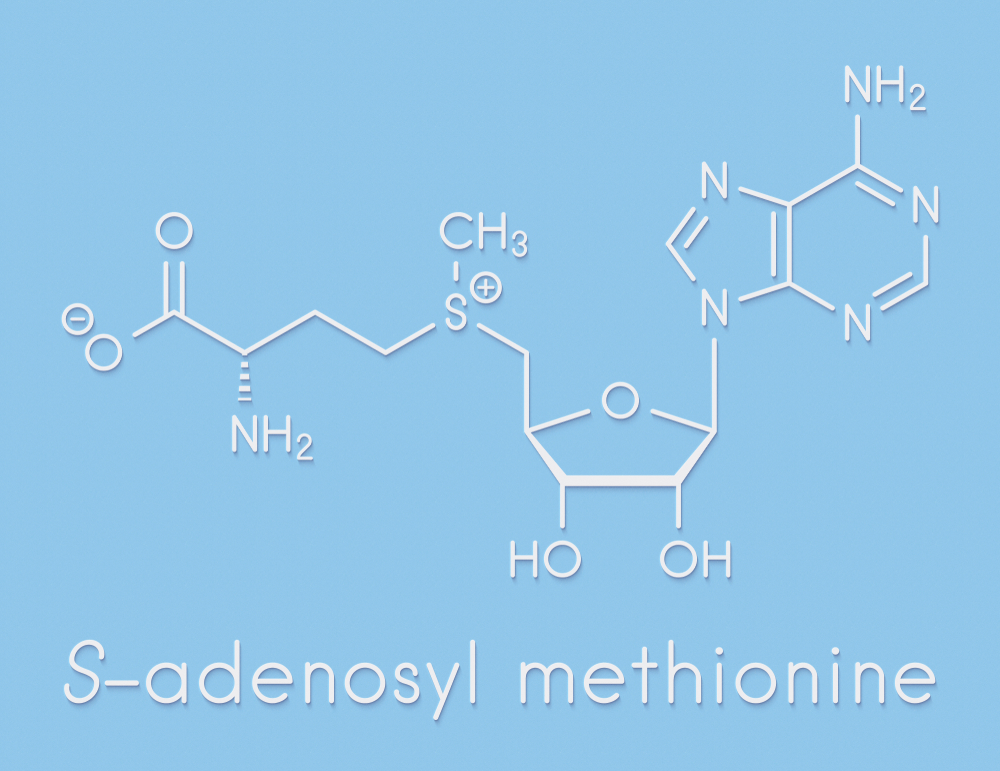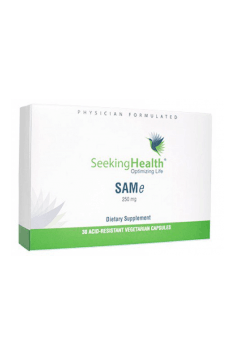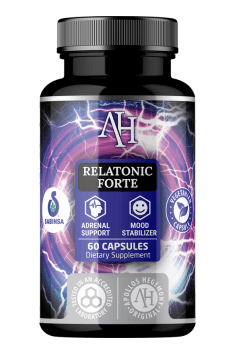Is your life an endless stream of stress, frustration and depression? Well, we might have a perfect solution for you! We are here to talk about totally natural substance present in your body, which may turn out to be exactly what you need in order to improve your mood and boost cognitive functions. We are talking here about S-adenosylmethionine, a substance which may be helpful in depression and to strengthen intellectual efficiency. It is an expensive product, but for many a real treasure which is worth every price.
What is SAMe?
S-adenosylmethionine (SAMe) is a chemical substance, naturally occurring in the organism, produced from methionine, which regulates a few important functions on a cellular level. It is also sold as a dietary supplement and it may be found under a few other names, including:
- S-adenosyl-L-methionine,
- S-adenosylmethionine,
- SAME,
- SAMe,
- Ademethionine,
- SAMSAMe was discovered in 1952 [1] and for the first time it drew attention of the researchers, when improper levels of this compound were documented in patients with depression and liver diseases. This inevitably led the researchers to check if the treatment of patients with SAMe may be helpful in any way. The assumption turned out to be correct. After 10-year studies, SAMe found wide application in the treatment of many diseases, including torpor, liver diseases, bone and joint inflammations and primarily depression.

How does SAMe work?
SAMe is simply methionine bound with the molecule of adenosine triphosphate (ATP). It cooperates with each living cell of the body, in which it works as a methyl donor, taking part in more than 100 different reactions. [2,3]. Basically SAMe works inside our body, passing methyl groups where they are needed, working through maintaining or accelerating various reactions in the organism.
SAMe also serves as a precursor molecule for the pathway of transsulfuration, which supports the synthesis of glutathione (an important antioxidant) and also the pathway of aminopropylation, which leads to the synthesis of polyamines (organic compounds composed of two or more amino acids). As we mentioned, SAMe deficiencies may lead to depression and other mental and physical ailments, including osteoporosis, liver diseases etc.
Benefits from taking SAMe supplement?
It fights depression
The most common reason for which people reach for SAMe are its antidepressant properties. Depression is a problem of younger and younger people and standard methods of treatment are insufficient of ineffective [4]. It was proven in a few studies that this nootropic has considerable, positive influence on gentle and moderate depression symptoms and what is really important is the fact that SAMe produces these therapeutic effects without typical, unpleasant side-effects, commonly appearing in case of antidepressants, such as headaches or sexual dysfunction [5,6,7]. What is more, SAMe starts working quicker than some commonly prescribed antidepressant drugs and may be tolerated in higher doses by patients. [4,5]
It improves the functioning of the brain.
Studies documented that SAMe levels in the cerebrospinal fluid (CSF) are considerably lower in patients fighting with severe depression, Alzheimer’s disease and dementia [8]. In reality, some studies proved that mice, which were diagnosed with deficiencies of vitamins B6 and B12, demonstrated considerable features of Alzheimer’s disease. [9]
SAMe is related to energy production with the participation of vitamin B12 and also the folate cycle, which provides important methyl groups necessary for SAMe mediation in methylation reactions. [8] It was proven that the treatment with SAMe increases the level of SAMe in cerebrospinal fluid and consequently - the mood and functioning of the brain. [8] Moreover, SAMe inhibits the progression of Alzheimer’s disease and improves spatial memory. [9]
Probably the most interesting study from 2016 proved that SAMe may play an important neuroprotective function in the organism by increasing the expression of brain-derived neurotrophic factor (BDNF), which makes it a potential Alzheimer’s treatment. [10]
It supports liver work
If you have been living a “tough life” when it comes to taking all types of potentially dangerous chemical substances (e.g. alcohol, nonsteroidal anti-inflammatory drugs, anabolic steroid etc.), SAMe may help your liver to restore normal work and health. Studies with the use of SAMe documented that it helps to restore liver work in the light of chronic diseases, such as non-alcoholic fatty liver disease, cholestasis, alcoholic cirrhosis and non-alcoholic cirrhosis [11,12,13]/ Moreover, SAMe may prevent / reverse toxicity of the liver caused by such drugs as acetaminophen (tylenol) or steroids. [11]
It improves the state joints

Osteoarthritis is the most common form of joint inflammation in the world. This ailment is caused by excessive weakness of cartilage, characterized by pain, stiffness, swelling and decreased movement scope. Studies on people show that SAMe alleviates discomfort of joints caused by osteoarthritis. [14] Moreover, many other studies carried out with the use of SAMe and its influence on bone and joint inflammations proved that it is comparable to NSAIDs (ibuprofen, celecoxib, naproxen). [15, 16, 17, 18, 19]
It should also be noticed that scientists concluded that SAMe is as effective as NSAIDs in the treatment of osteoarthritis, but WITHOUT negative side effects often attributed to NSAIDs.
It decreases the symptoms of fibromyalgia
Fibromyalgia (fibrositis) is a painful, non-inflammatory state of the musculoskeletal system. Constant pain is accompanied by stiffness, tiredness and disturbed sleep. In vivo studies on patients with fibromyalgia proved that the application of SAMe decreases stiffness, fatigue and generally improves well-being. [20,21,22] It is also known that fibromyalgia causes the symptoms of Sjögren syndrome, an autoimmune inflammatory diseases, which attacks oral cavity and eyeballs. [23] It was proven that SAMe supplementation decreases the number of sensitive / painful areas and improves mood. [24]
How to dose SAMe supplement?
Supplementation with S-adenosylmethionine ranges from 600 to 1200 mg per day. Most often it is divided into doses of 200-400 mg and taken with meals. In order to improve the function of the liver or the symptoms of degenerative diseases, it is recommended to use 1200 mg per day. If you want to fight with the drop of mood and depression, the doses of SAMe often encompass 200-400 mg / day for 15-20 days.
Notice that if you use SAMe in osteoarthritis, it will require a few-week application (at least 4 weeks) in order to observe positive effects of the substance.
What to combine SAMe with?
Since so few people use this powerful supplement, we think that it would be a great idea to first use it “on its own”, which means along with vitamins B6, B12 and folic acid. The simplest way is to complement B-group vitamins (B-Complex) during the application of SAMe, but make sure it is a formula containing folic acid (vitamin B9).
The reason for that is that if you lack folic acid or vitamin B12 available in the organism, the process of methylation is ineffective, which may lead to worse mental efficiency, problems with memory and concentration and even depression. [26]

It is best to add different substances to SAMe, depending on the effects we want to achieve:
To decrease anxiety / Improve mood
Bacopa is a flowering plant often used in order to improve mood, but it is also an incredibly strong nootropic. Bacopa, Gotu Kola, Rhodiola and / or L-Theanine are great options, as these compounds help to relax and improve the abilities of the organism to fight with various types of stress. Another great option may be L-tyrosine, which increases the level of dopamine in the organism, which is directed to the pleasure centers in the brain. Better mood is guaranteed!
To improve concentration
If you use SAMe in order to improve cognitive functions, you may combine it with a solid dose of L-Tyrosine + Choline + Lion’s Mane in order to promote better focus, recall memories and health of the brain.
Toxicity / Potential side effects
SAMe generally does not cause serious side-effects. Gentle side-effects that appear from time to time encompass nausea and stomach disorder. Studies on people carried out with SAMe were relatively short and encompassed small test groups. Studies carried out during the last 2 years proved lack of important side effects of SAMe application.
If you are currently using any drug for depression, bipolar affective disorders etc. consult your doctor before starting the application of any supplement!
Sources






